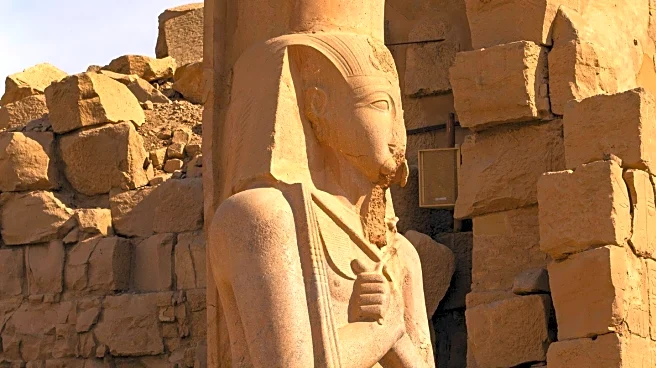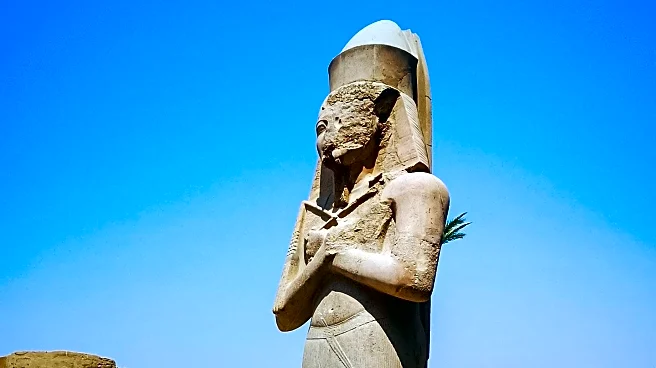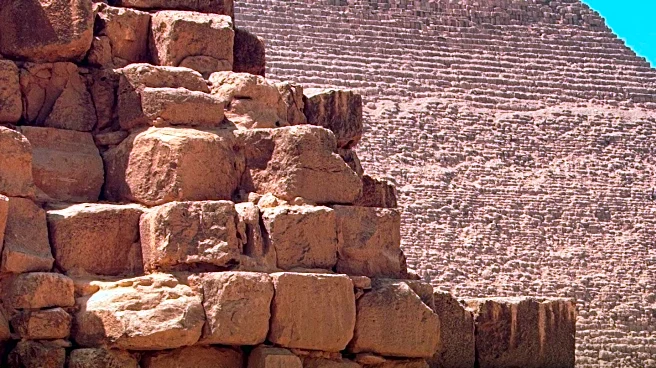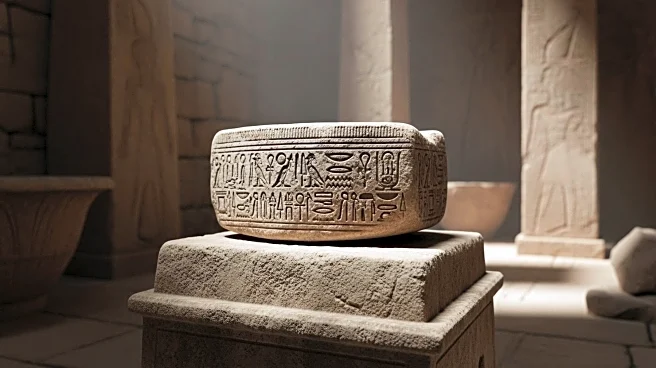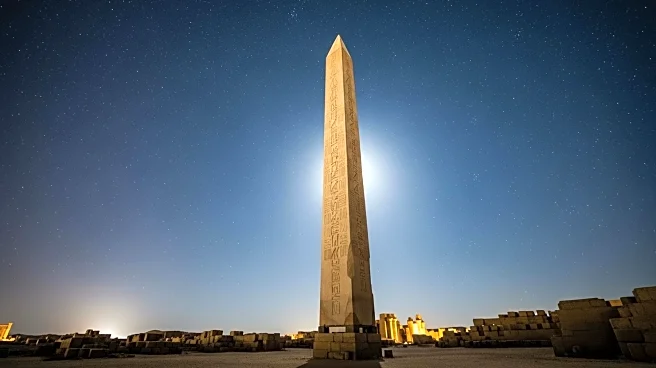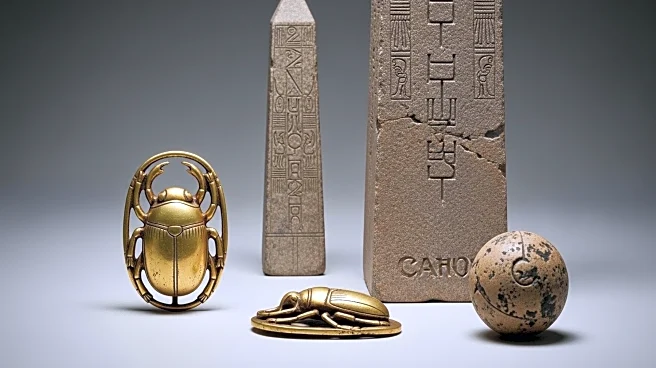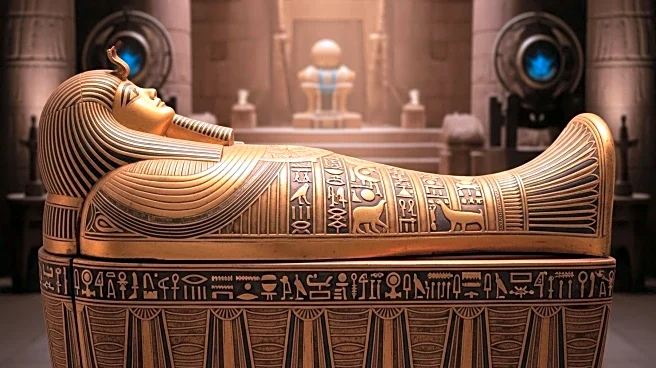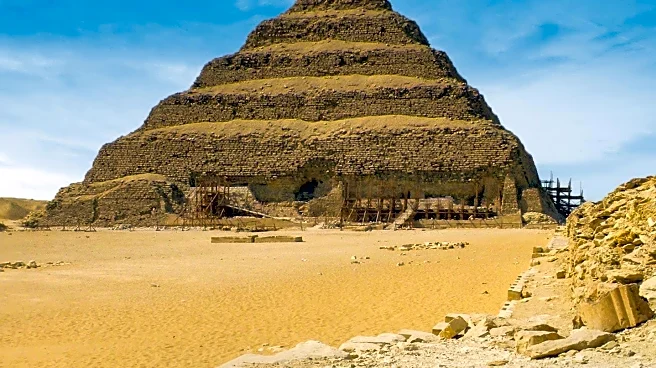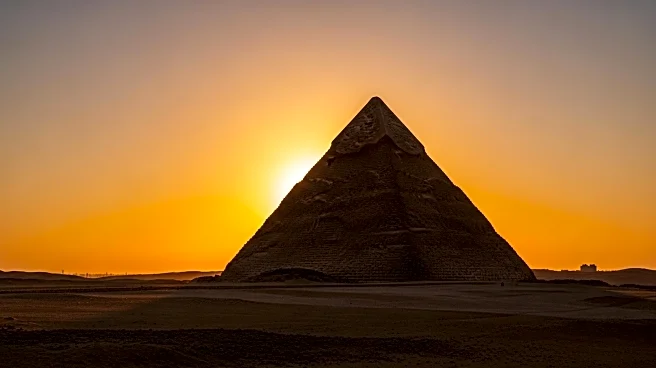What's Happening?
Recent research has shed light on the origins of the ancient Egyptian temple complex at Karnak, suggesting it was inspired by a creation myth involving a primeval mound rising from watery chaos. An international team conducted a comprehensive geoarchaeological survey at Karnak, aiming to determine when the site was first occupied. The temple complex, located near Luxor, is about 1,500 feet east of the Nile, a result of natural river shifts and human intervention. Researchers extracted over 60 sediment cores from various sites at Karnak, some reaching depths of nearly 40 feet, and analyzed them alongside thousands of ceramic fragments to establish a timeline. Findings indicate that before 2520 B.C.E., the site was unsuitable for permanent structures due to Nile flooding. The earliest occupation likely occurred during the Old Kingdom, around 2700 B.C.E. to 2200 B.C.E., supported by ceramic fragments dated between 2300 B.C.E. and 1980 B.C.E. The temple was built on a fluvial terrace surrounded by river channels, forming an island configuration, which may have held symbolic significance.
Why It's Important?
The discovery of the temple's origins at Karnak provides valuable insights into ancient Egyptian religious practices and site selection influenced by environmental factors. The connection between the temple's location and the creation myth highlights the interplay between human action, natural environment, and religious beliefs. This research enhances understanding of how ancient Egyptians adapted to and manipulated their surroundings for religious purposes. The findings also contribute to the broader field of archaeology by offering a clearer timeline of occupation and development at one of Egypt's most significant religious sites. The study underscores the importance of geoarchaeological methods in uncovering historical narratives and cultural evolution.
What's Next?
Further research and excavations at Karnak may continue to reveal more about the site's historical significance and its role in ancient Egyptian culture. Archaeologists might explore additional areas within the temple complex to uncover artifacts and structures that could provide deeper insights into the religious and social practices of the time. The ongoing study of sediment cores and ceramic fragments could refine the timeline of occupation and development at Karnak, offering a more detailed understanding of the site's evolution. Collaboration between international research teams may lead to new discoveries and interpretations, enhancing the global knowledge of ancient Egyptian history.
Beyond the Headlines
The research at Karnak highlights the ethical considerations in archaeology, such as preserving cultural heritage while conducting excavations. The study also raises questions about the long-term impact of human intervention on natural landscapes and how ancient practices can inform modern environmental management. The symbolic significance of the temple's location may influence contemporary discussions on the relationship between religion and environmental stewardship. Additionally, the findings could inspire cultural and educational initiatives aimed at promoting awareness of ancient Egyptian history and its relevance to modern society.

